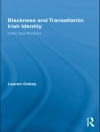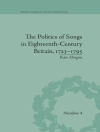This study follows the aesthetic of the sublime from Burke and Kant, through Wordsworth and the Shelleys, into Thackeray, Dickens, Eliot and Hardy. Exploring the continuities between the romantic and Victorian ‘periods’ that have so often been rather read as differences, the book demonstrates that the sublime mode enables the transition from a paradigm of overwhelming power exemplified by the body of the king to the pervasive power of surveillance utilized by the rising middle classes. While the domestic woman connected with the rise of the middle class is normally seen as beautiful, the book contends that the moral authority given to this icon of depth and interiority is actually sublime. The binary of the beautiful and the sublime seeks to contain the sublimity of womanhood by insisting on sublimity”s masculine character. This is the book”s most important claim: rather than exemplifying masculine strength, the sublime marks the transition to a system of power gendered as feminine and yet masks that transition because it fears the power it ostensibly accords to the feminine. This aesthetic is both an inheritance the Victorians receive from their romantic predecessors, and, more importantly, a broad historical phenomenon that questions the artificial boundaries between romantic and Victorian.
Stephen Hancock
The Romantic Sublime and Middle-Class Subjectivity in the Victorian Novel [PDF ebook]
The Romantic Sublime and Middle-Class Subjectivity in the Victorian Novel [PDF ebook]
Koop dit e-boek en ontvang er nog 1 GRATIS!
Formaat PDF ● Pagina’s 214 ● ISBN 9781135492922 ● Uitgeverij Taylor and Francis ● Gepubliceerd 2013 ● Downloadbare 6 keer ● Valuta EUR ● ID 2823061 ● Kopieerbeveiliging Adobe DRM
Vereist een DRM-compatibele e-boeklezer












